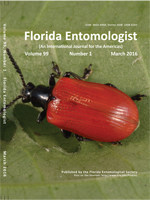The objective of this study was to compare growth and development of Helicoverpa zea Boddie and Helicoverpa armigera Hübner (Lepidoptera: Noctuidae) larvae that were feeding on an artificial diet. Neonate larvae of H. zea and H. armigera were collected in maize fields cultivated at the Brazilian Agricultural Research Corporation, Embrapa Maize & Sorghum, in Sete Lagoas (Minas Gerais) and in farmers' cotton fields in Luís Eduardo Magalhães (Bahia), respectively. Bioassays were conducted in the laboratory using individual larvae in 50 mL plastic cups fed a white bean—based artificial diet and maintained at a temperature of 26 ± 2 °C and a relative humidity of 47 ± 10%. The following larval biological parameters were evaluated: number and duration of instars, survival of larval instars and pupae, larval biomass, larval head capsule size, and larval length. An adaptation index was computed for comparison of development of the 2 species. Significant differences were observed between the species for all variables except for the number of instars and pupal survival. Although H. armigera larvae developed faster and were smaller than H. zea larvae, the diet tested can be considered adequate for rearing both species in the laboratory.
How to translate text using browser tools
1 March 2016
Comparison of Biology between Helicoverpa zea and Helicoverpa armigera (Lepidoptera: Noctuidae) Reared on Artificial Diets
Tatiane Aparecida Nascimento Barbosa,
Simone Martins Mendes,
Geovane Teixeira Rodrigues,
Paulo Eduardo de Aquino Ribeiro,
Christiane Almeida dos Santos,
Fernando Hercos Valicente,
Charles Martins de Oliveira

Florida Entomologist
Vol. 99 • No. 1
March 2016
Vol. 99 • No. 1
March 2016
adaptation index
Bollworm
corn earworm
cotton earworm
gusano
gusano bellotero
gusano del algodón




